Wandering through Rome feels like walking through an outdoor museum. Around every corner is another piece of history, an incredible sculpture, or an ornate fountain bubbling in a piazza. This is a city that invites you to slow down, look up, and take it all in.
Rome is best experienced on foot, especially on your first day. After arriving in the Eternal City, we wanted to get a feel for its energy before diving into ticket queues. So, we spent our first full day simply roaming. With comfortable shoes, a bit of gelato, and no set schedule, we walked through lively piazzas, paused at world-famous fountains, and admired some of the city’s most iconic landmarks.
This relaxed walking tour hits many of Rome’s top sights from the outside, giving you a memorable first impression without a full day of touring. Save the deep dives for later—when you’re ready to explore more.
Check out our full post, 4 Days in Rome Itinerary with Kids for day-by-day plans and recommendations for touring with kids.
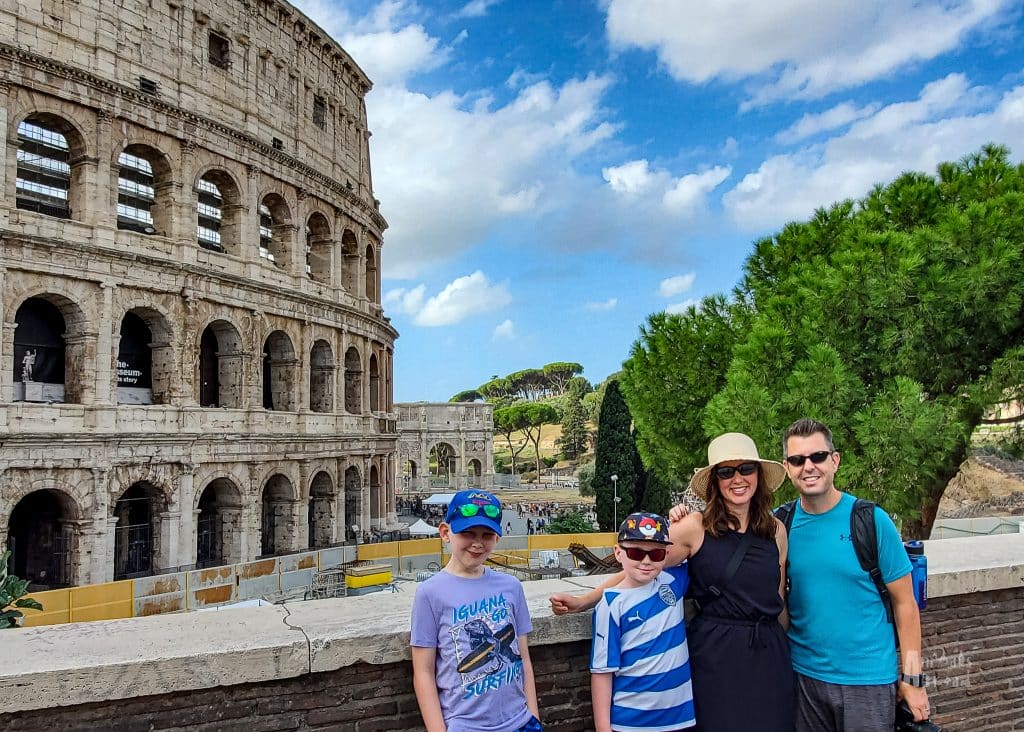
Route Overview
• Start: Spanish Steps
• End: Castel Sant’Angelo (or continue to St. Peter’s Square)
• Distance: ~7.8 km
• Time: 3–6 hours, depending on pace, breaks, and curiosity
• Best for: Families, first-timers, and those easing into the city
Spanish Steps
Start your day at the elegant Spanish Steps, a 135-step staircase that connects Piazza di Spagna with the Trinità dei Monti church above. It’s a perfect early-morning photo spot before the crowds arrive.
Designer boutiques and high-end shops line the surrounding streets, making this one of the city’s fanciest shopping areas. At night, their glowing displays light up the narrow alleys. It’s hard not to pause at the window displays to admire the colourful designs and dramatic presentation.
Tip: Climb to the top for a view over the rooftops of Rome and a quiet moment to start your walk.
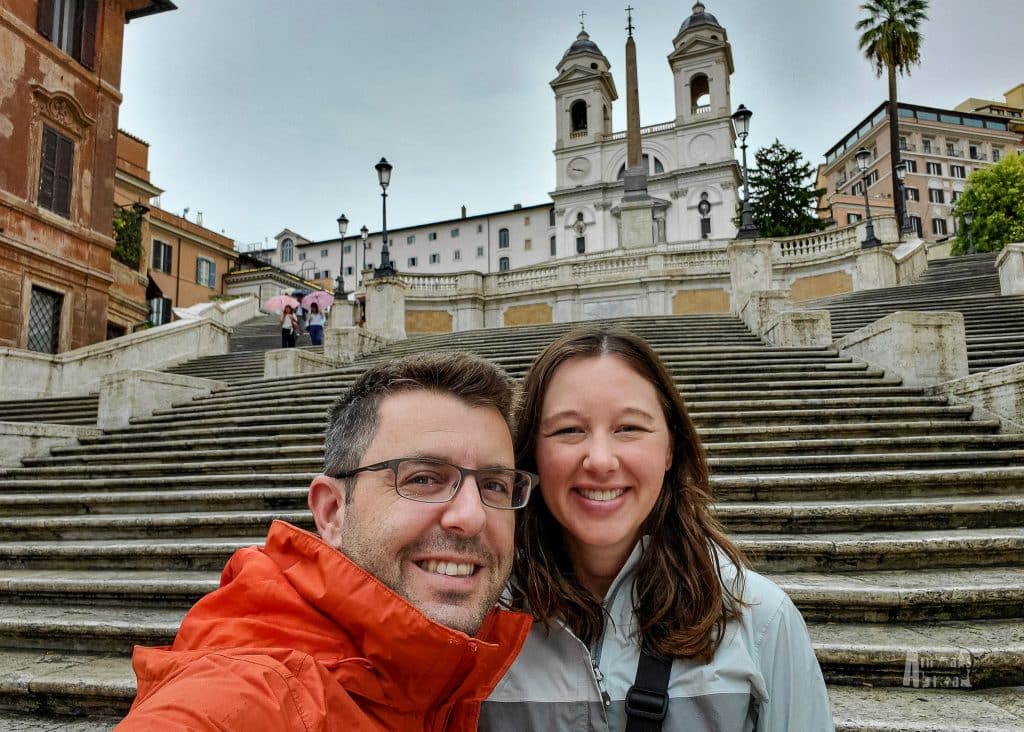
Trevi Fountain
~10-minute walk
The Trevi Fountain is one of Rome’s most iconic landmarks, and the Baroque masterpiece lives up to its reputation. Sculpted marble seems to rise from the water itself, with Neptune commanding the scene from the centre, surrounded by sea horses and tritons. It’s easy to see why the Trevi Fountain is one of the most visited places in Rome.
The crowds were thick—shoulder to shoulder, everyone angling for a photo—but the energy was part of the experience. Even from a distance, the sheer craftsmanship is striking, giving the impression of motion and life bursting from the stone. It’s hard to believe that all of it was once just solid blocks of marble. Each detail was finely carved with patience and precision, knowing that one wrong move could alter the entire vision.
Don’t forget the tradition: toss a coin over your left shoulder with your right hand.
- 1 coin: You’ll return to Rome
- 2 coins: You’ll fall in love
- 3 coins: You’ll marry the person you fell in love with.
Fun fact: Around €3,000 in coins are collected from the fountain each day and donated to charity.
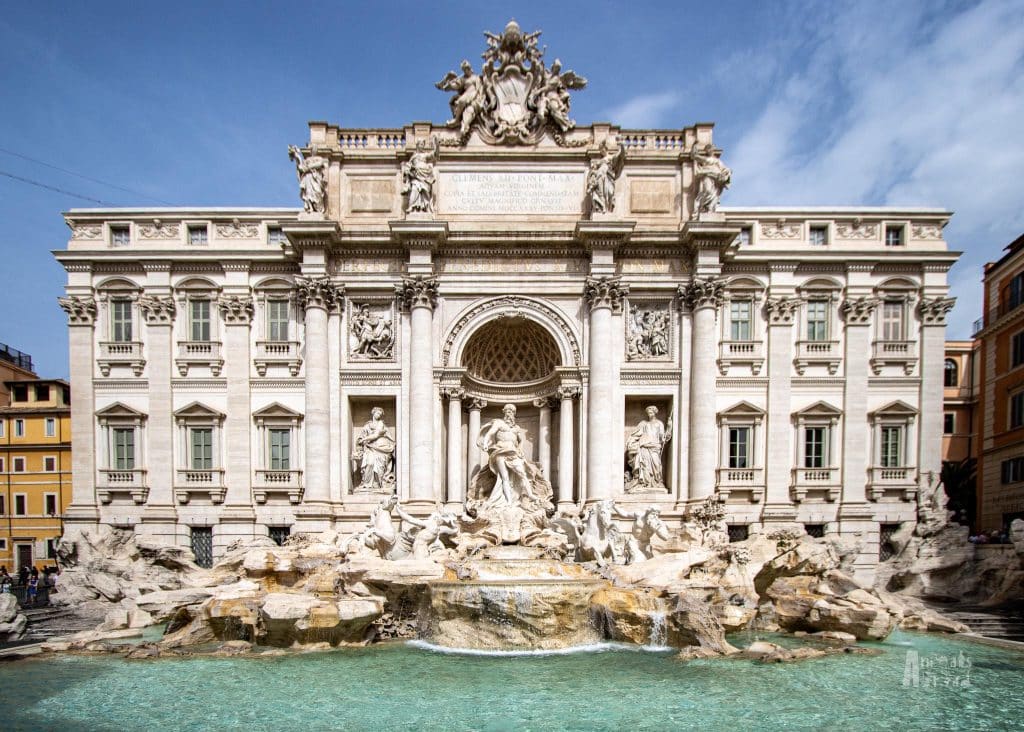
t’s never too early for gelato! Grab a scoop at Gelato Italiano before continuing your walk.

Pantheon
~10-minute walk
One of the best-preserved buildings of Ancient Rome, the Pantheon was originally built in 125 AD as a temple to all Roman gods and later converted into a Catholic church. The rectangular portico, supported by massive granite columns, opens into a circular rotunda with a perfect dome and an open oculus at the top.
The marble floors, statues, and tombs inside offer plenty to admire, but it’s the engineering of the dome that leaves a lasting impression. Built without modern materials, it’s still the largest unreinforced concrete dome in the world.
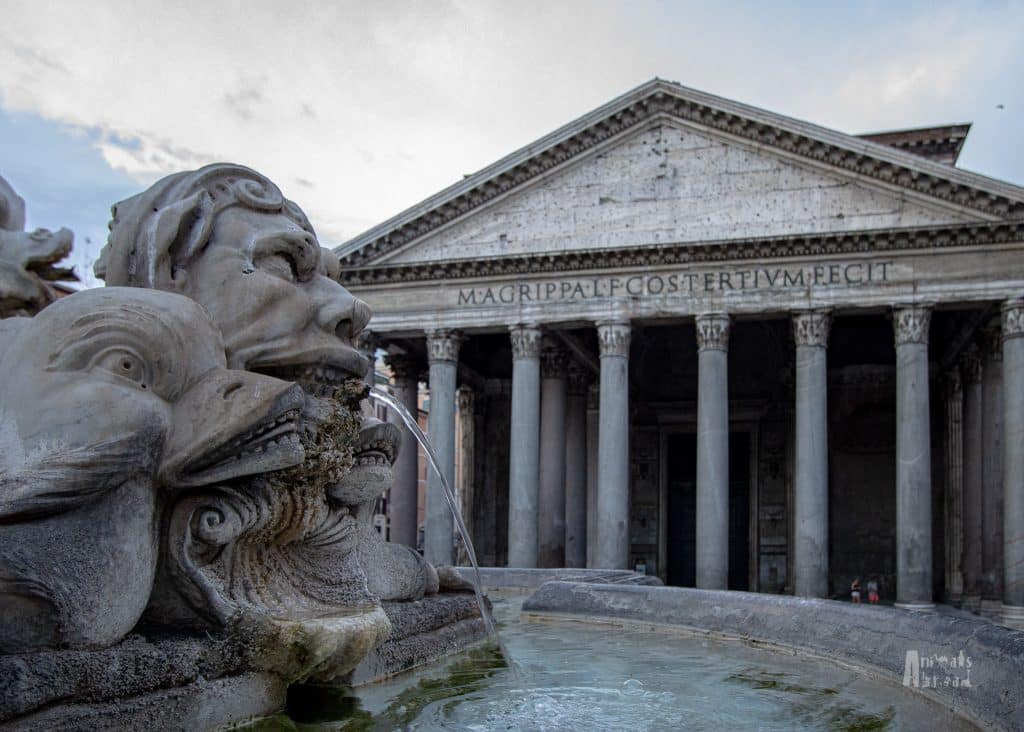
Piazza Navona
~5-minute walk
Built over the site of an ancient stadium, Piazza Navona retains its elongated oval shape. Today, it’s home to three Baroque fountains, the most famous being Bernini’s Fountain of the Four Rivers.
Il Vittoriano / Piazza Venezia
~10-minute walk
This massive white marble monument is hard to miss. Officially called the Altare della Patria (Altar of the Fatherland), it honours Victor Emmanuel II, the first king of unified Italy. Some locals jokingly call it the “wedding cake” or “typewriter” because of its size and stark white appearance.
You can climb (or take an elevator) to the top for some of the best panoramic views of Rome.
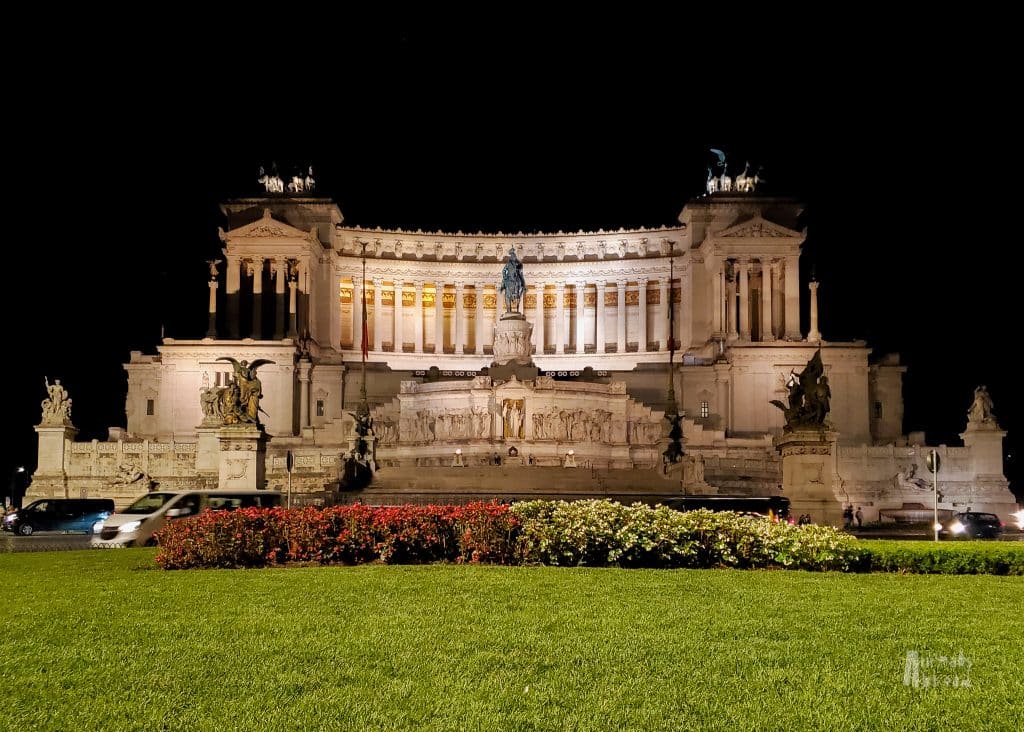
Trajan’s Column
Just around the corner from Il Vittoriano
This towering marble column tells the story of Emperor Trajan’s military campaigns in a stunning spiral of carved reliefs. Look closely, and you’ll spot thousands of tiny soldiers, horses, and scenes of battle spiralling upward—great for kids to circle and search for details.
No time to stop? You can still admire the column from the street—it’s easy to spot near Piazza Venezia.
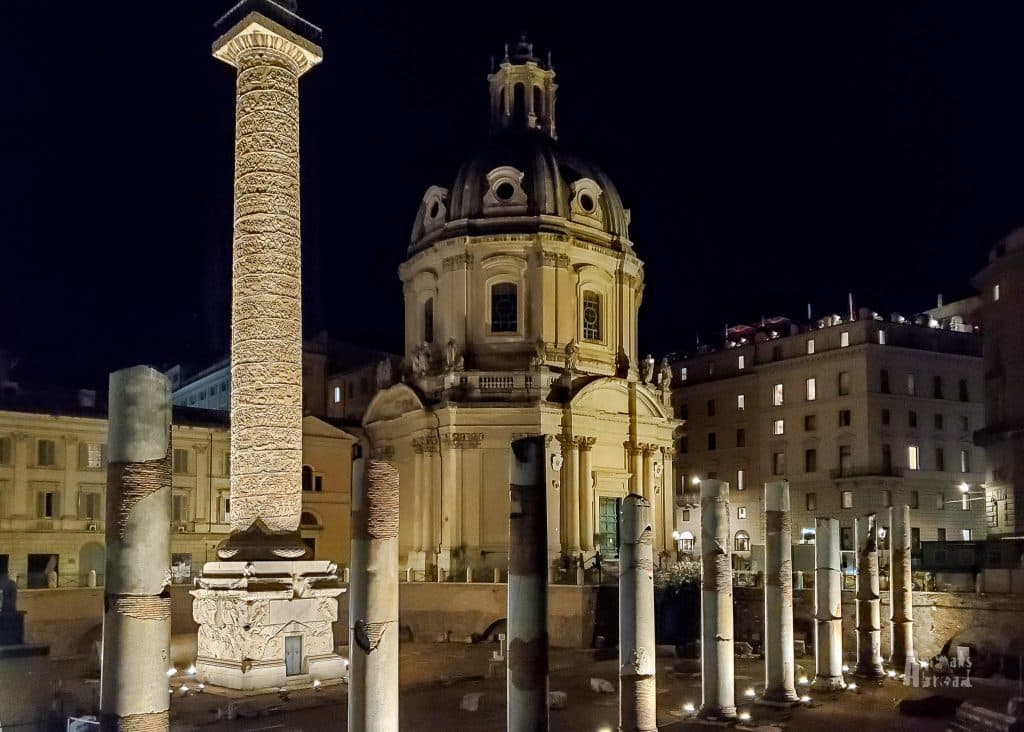
Roman Forum + Colosseum (Exterior Views)
~12-minute walk along Via dei Fori Imperiali
Walk along this broad avenue to admire the Forum ruins, then end with a view of the Colosseum—Rome’s most famous landmark. The Forum was the political, religious, and commercial heart of ancient Rome. You can peek through the fences to see temples, columns, and remnants of basilicas.
We saved going inside the Colosseum and Palatine Hill for another day, but even from the outside, it’s an unforgettable sight.
Tip: For a great photo, cross the street to the raised walkway near the Colosseo Metro station.
See our complete post: Inside the Colosseum: Touring Ancient Rome with Kids.
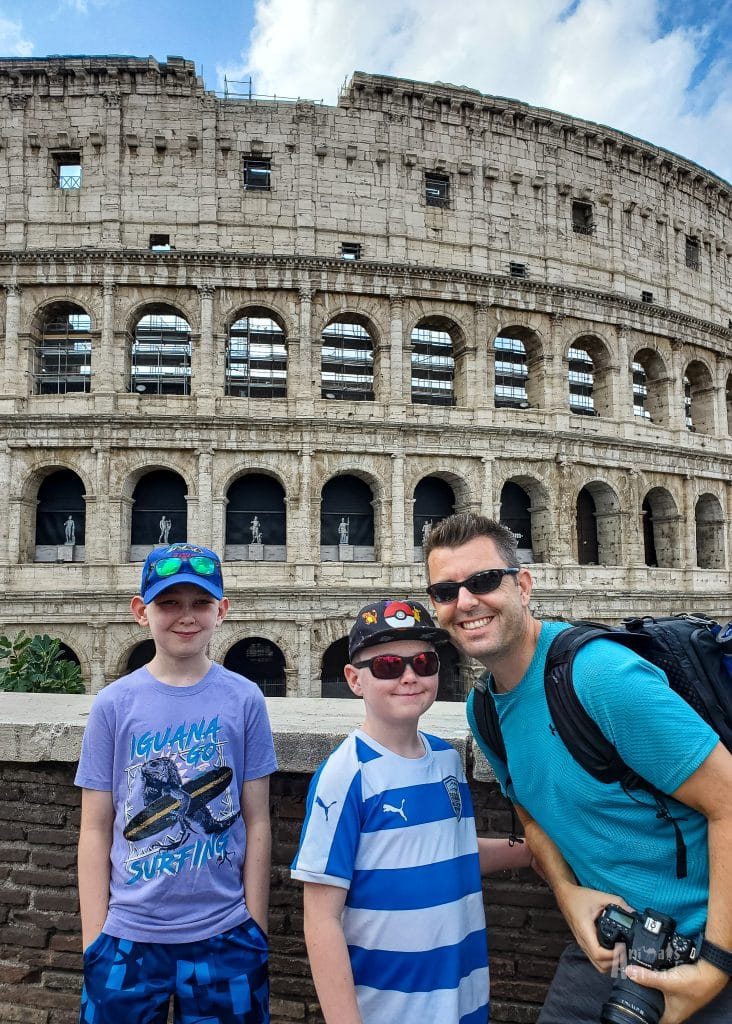
Bocca della Verità (Optional Extension)
~12-minute walk
This quirky stone face has a big reputation. The Mouth of Truth is said to bite off the hand of anyone who tells a lie while their hand is inside. Kids love it! It’s located near Santa Maria in Cosmedin and surrounded by small, ancient temples that are easy to overlook but fun to explore.
Castel Sant’Angelo
~25–30 min walk from the Colosseum or ~15 min from Bocca della Verità
This round fortress by the Tiber River was originally built as a mausoleum for Emperor Hadrian. Over the centuries, it became a papal stronghold, a prison, and even a treasury. Its stone ramparts offer fantastic views of the river and the Vatican.
Whether you go inside or cross Ponte Sant’Angelo, the bridge lined with angel statues, it’s a scenic stop that adds a dramatic end to your walking tour.
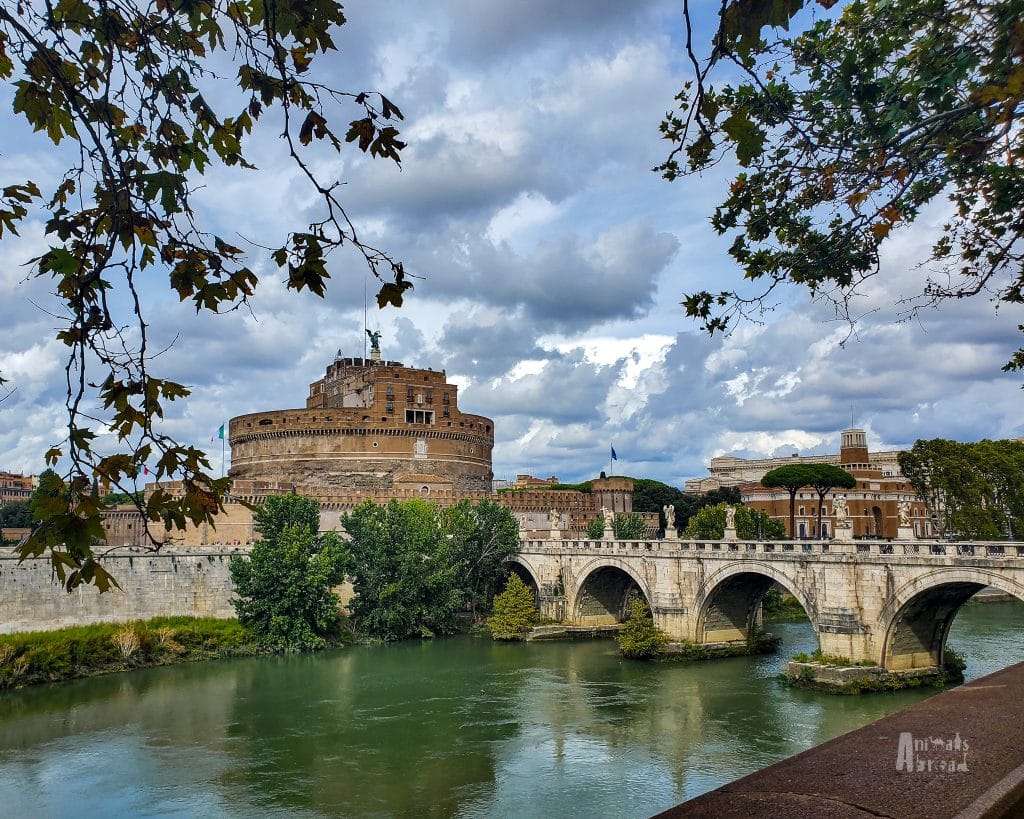
St. Peter’s Square (Optional Extension)
~10–15 min walk from Castel Sant’Angelo
If you’re up for it, continue a little further to St. Peter’s Square for a quick peek at the Vatican. Even without going inside, the massive piazza is impressive. The golden dome of St. Peter’s Basilica—one of the largest churches in the world—shimmers in the sunlight, framed by the grand rows of Bernini’s colonnade.
It’s a great spot to pause, take in the scale of the space, and snap a family photo beneath the iconic dome. Save the museums and inside tours for another day.
For tips and what to expect, check out our full post: Visiting the Vatican with Kids.
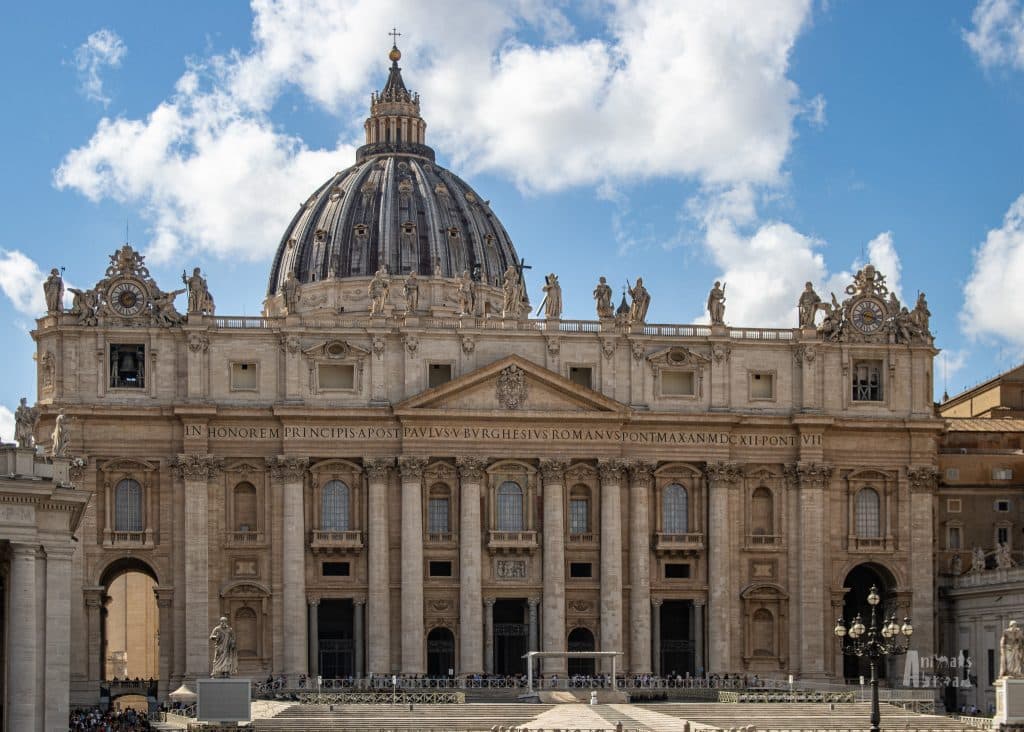
The Glow of Rome: Take a Stroll in the Evening
Whether you have the energy to keep walking after your day of exploring—or plan to return on another evening—don’t miss Rome at night. Landmarks like the Colosseum, Il Vittoriano, and Trevi Fountain are beautifully illuminated, revealing new details and atmosphere that you don’t get in daylight. The crowds are smaller, the heat has lifted, and the whole city feels calmer. The Colosseum is especially striking at night. Walk around the outside and soak in the view.
Tip: Grab a late-night gelato or some takeaway pasta and wander through the piazzas. It’s the perfect way to end your first day in Rome.
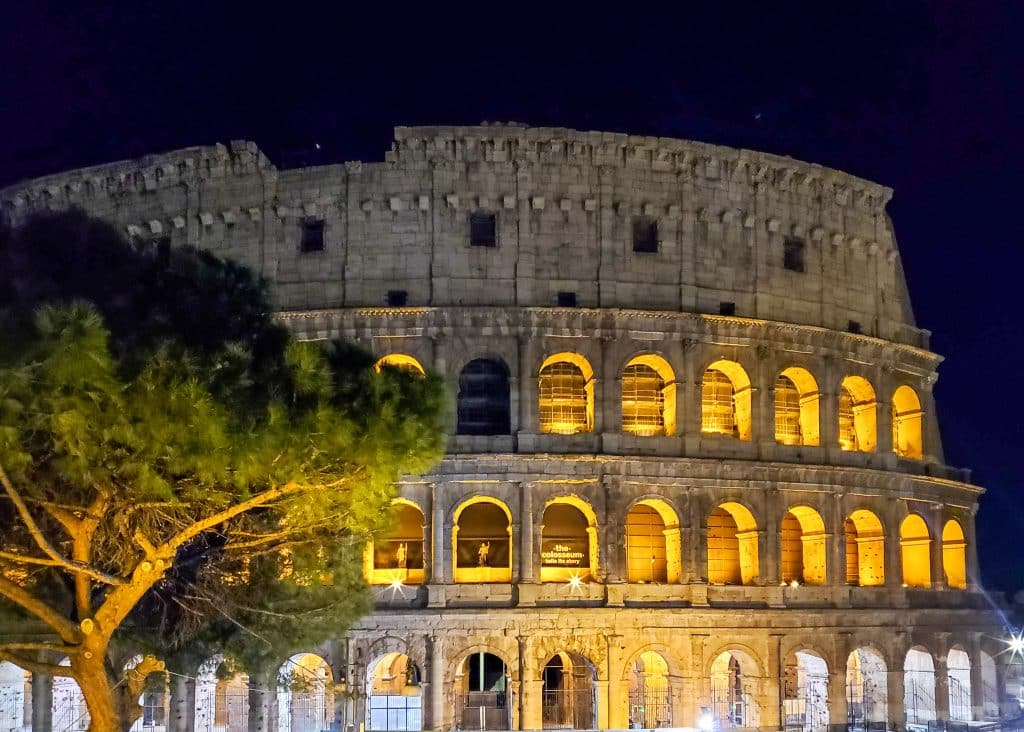
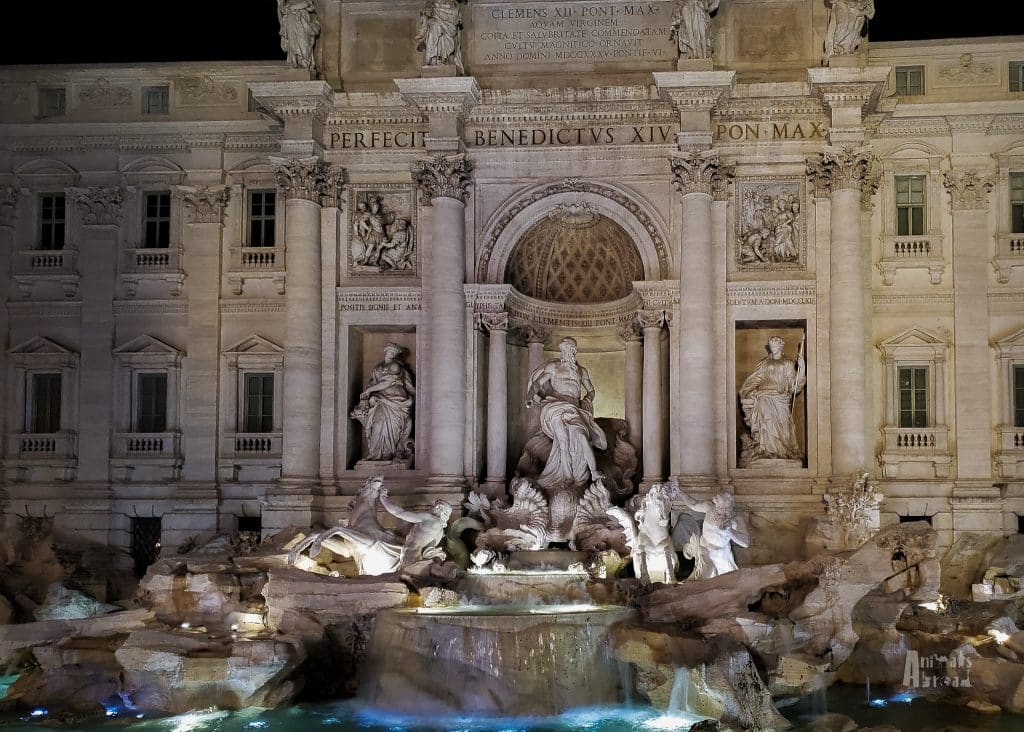
Tips for Roaming Rome with Kids
• Start early to avoid heat and crowds
• Wear comfortable shoes—you’ll be walking on cobblestones
• Bring a refillable water bottle: There are public fountains all over Rome
• Public bathrooms can be scarce and often charge a small fee. Keep coins handy.
• Plan for snack breaks: Gelato, espresso, and pizza, and take away pasta
• This is a great day to get your bearings before tackling tickets and tours.
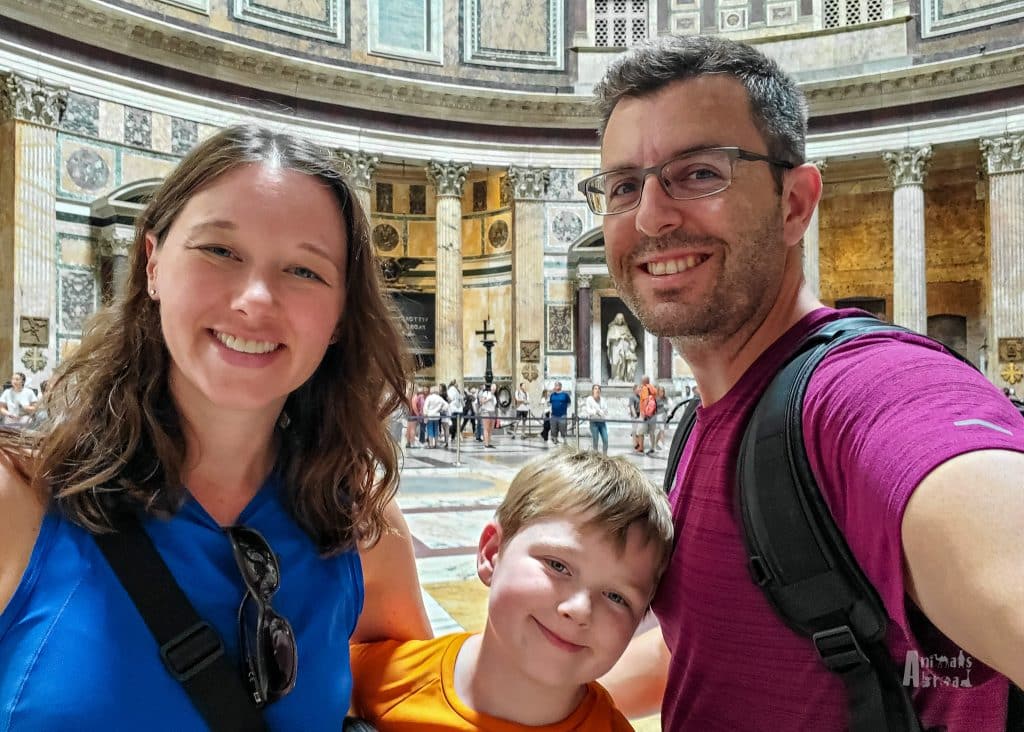
Roam, Wander, Repeat
That’s the thing about Rome—you don’t need a ticket or a tour guide to be amazed. Around every corner is another marble statue, crumbling column, or sunlit piazza. Of course, the city is home to world-famous landmarks, but sometimes the most memorable moments come from simply walking without a plan.
Whether you follow this route exactly or veer off down a quiet alley, don’t be afraid to wander. In Rome, losing yourself in the beauty is part of the experience.
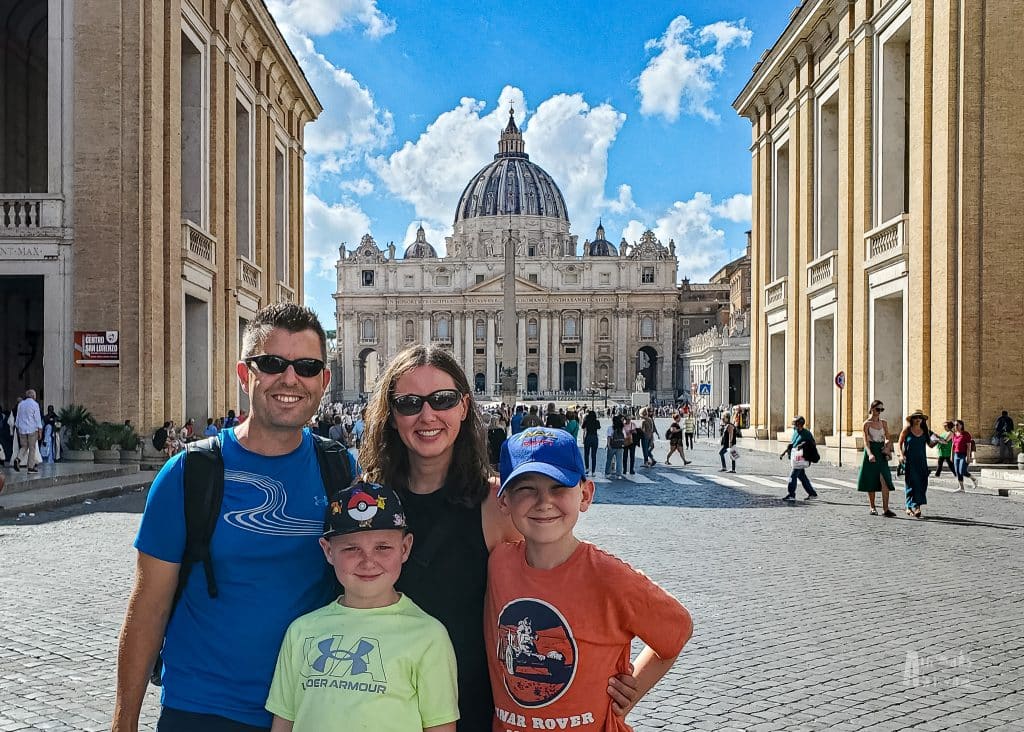
Ready to Explore Italy?
Check out these related posts to help plan your trip:
• Fun Things to Do in Venice with Kids
• Becoming Gondoliers: Learning to Row a Gondola in Venice
• 4-Day Itinerary in Rome with Kids
• Inside the Colosseum: Touring Ancient Rome with Kids
• The Vatican with Kids: What to Expect & How to Plan

